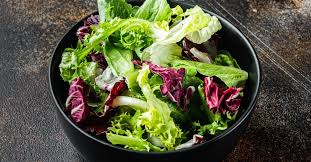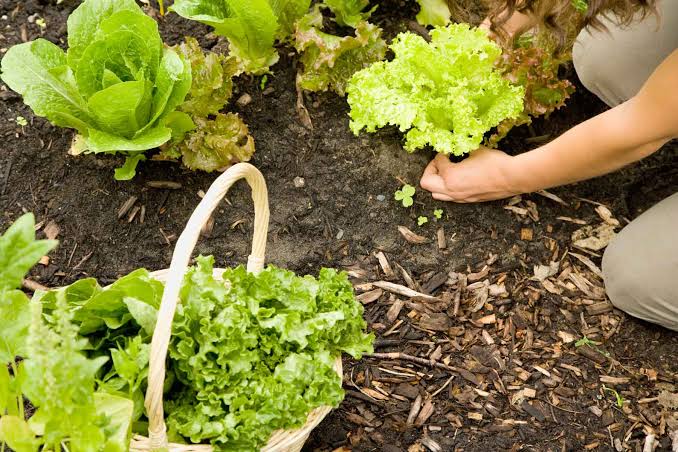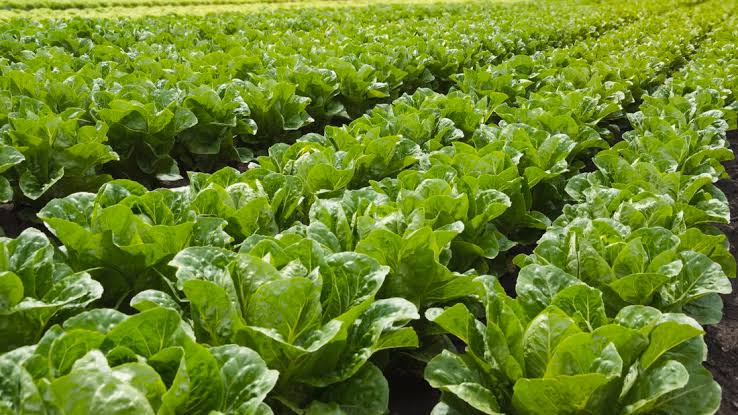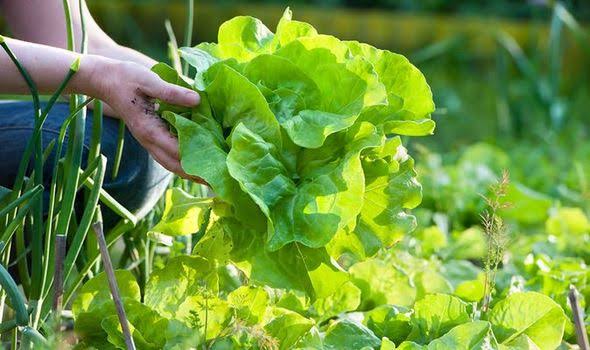Lettuce is a leafy green vegetable that many people enjoy eating. It is often used in salads and sandwiches because of its fresh and crisp texture. Lettuce comes in various types, such as iceberg, romaine, and butterhead. Each type has its unique characteristics.
Lettuce is a great source of vitamins and minerals, including vitamin A, vitamin K, and folate. These nutrients are important for maintaining good health and supporting various bodily functions. Eating lettuce can contribute to overall well-being.
One of the notable features of lettuce is its high water content, which makes it a hydrating choice. Staying hydrated is essential for the body to function properly, and lettuce can be a delicious way to help meet daily hydration needs.
In addition to being a tasty addition to meals, lettuce is low in calories, making it a popular choice for those looking to manage their weight. Its light and refreshing nature make it a versatile ingredient in a variety of dishes, catering to different taste preferences.
Lettuce is easy to grow and is a common vegetable in home gardens. Its adaptability and relatively quick growth make it a favorite among gardeners, providing a steady supply of fresh greens for salads or other culinary uses.
Culinary enthusiasts appreciate lettuce for its ability to pair well with a wide range of ingredients, from fruits and nuts to various dressings. Its mild flavor complements and enhances the overall taste of dishes, making it a staple in kitchens worldwide.
Beyond its culinary uses, lettuce has cultural significance in different parts of the world. It has been a part of traditional cuisines for centuries, contributing to the cultural identity of various regions.
Lettuce is a versatile and nutritious vegetable that adds freshness and flavor to meals. Whether enjoyed in a classic salad or incorporated into other dishes, lettuce remains a popular choice for those seeking a healthy and delicious addition to their diet.
Furthermore, lettuce is often praised for its role in promoting digestive health. The fiber content in lettuce assists in maintaining a healthy digestive system by supporting regular bowel movements. Including lettuce in your diet can contribute to digestive comfort and overall well-being.
Lettuce is not only consumed for its nutritional value but also for its texture and visual appeal in culinary presentations. Its vibrant green leaves add an inviting touch to dishes, making them visually appealing. Chefs and home cooks alike appreciate the aesthetic qualities that lettuce brings to a plate.
Another interesting aspect of lettuce is its role in various cultural and historical contexts. In ancient civilizations, lettuce was considered more than just a food item. It held symbolic meanings and was often associated with fertility and religious rituals. Over time, these symbolic connections have evolved, but the cultural significance of lettuce remains diverse.
The cultivation of lettuce has also adapted to different climates and regions, leading to a wide variety of locally adapted varieties. This diversity allows people around the world to enjoy lettuce in various forms, from the familiar crispness of iceberg lettuce to the tender leaves of butterhead varieties.
Lettuce’s versatility extends to its use as a wrap or substitute for traditional bread in some dishes. This creative use aligns with modern dietary trends, offering a lighter alternative for those seeking gluten-free or low-carb options. Lettuce wraps have gained popularity as a healthier and refreshing way to enjoy sandwiches and wraps.
Moreover, lettuce has found its way into the realm of culinary experimentation. Creative chefs explore innovative ways to incorporate lettuce into unexpected dishes, showcasing its adaptability and ability to enhance the overall dining experience.
However, lettuce is more than just a humble vegetable—it’s a versatile, nutritious, and culturally significant ingredient with a rich history. Whether enjoyed for its health benefits, culinary appeal, or cultural associations, lettuce continues to be a beloved and enduring part of our diet and culinary traditions.
Uses of Lettuce

The uses of lettuce extend beyond its traditional role in salads. Here are some creative and practical applications of lettuce in the culinary world:
1. Wraps and Rolls: Lettuce leaves can serve as a healthy and low-carb alternative to traditional wraps or rolls. They are often used to encase fillings such as grilled chicken, shrimp, or tofu, creating a fresh and crunchy handheld meal.
2. Lettuce Cups: Large, sturdy lettuce leaves, like those from iceberg or romaine, can be used as cups to hold savory fillings. This is a popular technique in Asian cuisine, where minced meat, vegetables, or rice are nestled inside lettuce cups for a flavorful and interactive dining experience.
3. Smoothies and Juices: While not as common, some varieties of lettuce, like green leaf lettuce, can be added to smoothies or juices for an extra nutrient boost. Its mild flavor blends well with fruits and other vegetables, contributing to a refreshing beverage.
4. Soup Garnish: Tender lettuce leaves can be added as a garnish to hot soups just before serving. This not only adds a pop of color but also introduces a contrasting texture to the warm liquid.
5. Sandwich Ingredient: Beyond being a typical salad component, lettuce can be a crisp and refreshing addition to sandwiches and burgers. Its moisture content can balance out the flavors and textures of heartier ingredients.
6. Stir-Fries: In Asian-inspired stir-fries, especially those with a lighter sauce, shredded lettuce can be tossed in at the last minute. This quick wilting adds a subtle crunch to the dish.
7. Lettuce Chips: Bake or air-fry thin lettuce leaves for a healthier alternative to potato chips. These “lettuce chips” can be seasoned with various herbs and spices for a flavorful snack.
8. Grilled Lettuce: Grilling lettuce, such as romaine hearts, imparts a smoky flavor and slightly wilted texture. Drizzle with dressing and sprinkle with Parmesan for a unique and sophisticated salad.
9. Lettuce Pestos: Experiment with using lettuce, along with traditional herbs like basil, in pesto recipes. This can create a lighter and milder pesto sauce, perfect for pasta dishes or as a flavorful spread.
10. Lettuce Cups in Desserts: For a surprising twist, use large lettuce leaves as a vessel for serving sweet treats. Fill them with fresh fruit, sorbet, or even a drizzle of chocolate for a guilt-free dessert option.
These diverse uses showcase the adaptability of lettuce in the kitchen, encouraging culinary exploration and creativity beyond the boundaries of conventional salad-making.
Read Also: How to Grow and Care for Tomatoes
How to Grow and Care for Lettuce

Growing and caring for lettuce is a straightforward process that can be rewarding, especially if you enjoy having fresh greens at your fingertips. Here’s a simple guide:
1. Choosing the Right Variety: Select a lettuce variety that suits your taste preferences and the local climate. Common types include iceberg, romaine, butterhead, and loose-leaf. Consider factors like heat tolerance and maturity time.
2. Starting from Seeds: Begin by planting lettuce seeds indoors a few weeks before the last expected frost. Use seed trays or small containers, and transplant the seedlings into the garden once they are a few inches tall.
3. Soil and Location: Plant lettuce in well-draining soil rich in organic matter. Choose a location that receives partial sunlight, especially in warmer climates. Lettuce prefers cool conditions and can bolt (go to seed) prematurely in hot weather.
4. Planting: Plant lettuce seeds about 1/4 to 1/2 inch deep in rows spaced 12-18 inches apart, depending on the variety. Thin the seedlings to maintain proper spacing, ensuring good air circulation.
5. Watering: Keep the soil consistently moist, but not waterlogged. Lettuce prefers even moisture, so water regularly, especially during dry spells. Mulching around the plants helps retain soil moisture and prevents weed growth.
6. Fertilizing: Use a balanced, water-soluble fertilizer during the growing season. Avoid excessive nitrogen, as it may result in more foliage growth and less flavorful leaves. Follow the recommended application rates on the fertilizer package.
7. Protecting from Pests: Watch for common pests like aphids, slugs, and snails. Use organic or chemical-free pest control methods to avoid harmful residues on your lettuce. Row covers can also protect plants from insects.
8. Harvesting: Begin harvesting when the outer leaves are large enough to eat. Cut leaves near the base, leaving the inner leaves to continue growing. Harvest in the morning for the freshest taste.
9. Successive Planting: To ensure a continuous harvest, consider successive plantings every 2-3 weeks. This practice provides a steady supply of fresh lettuce throughout the growing season.
10. Bolting Prevention: To prevent bolting in warmer weather, choose heat-resistant varieties and provide shade during the hottest part of the day. Harvesting leaves regularly can also discourage premature flowering.
11. Winter Lettuce: In milder climates, you can grow lettuce throughout the winter. Use row covers or cold frames to protect plants from frost.
By following these simple guidelines, you can cultivate a bountiful crop of lettuce, whether you have a dedicated vegetable garden or a small container on your balcony. Enjoy the satisfaction of harvesting and savoring your homegrown lettuce in salads, sandwiches, and various culinary creations.
Read Also: How to Grow and Care for Wheat
Importance of Lettuce

The importance of lettuce extends beyond its role as a popular salad ingredient. Here are several aspects that highlight its significance:
1. Nutritional Value: Lettuce is a nutritious vegetable rich in essential vitamins and minerals, including vitamin A, vitamin K, folate, and potassium. These nutrients play crucial roles in maintaining good health, supporting immune function, and promoting bone health.
2. Hydration and Water Content: With its high water content, lettuce contributes to hydration. Staying well-hydrated is essential for various bodily functions, including digestion, circulation, and temperature regulation.
3. Weight Management: Low in calories and carbohydrates, lettuce is a valuable addition to a balanced diet for those aiming to manage or lose weight. Its fiber content also aids in promoting a feeling of fullness.
4. Digestive Health: The fiber in lettuce supports digestive health by promoting regular bowel movements and preventing constipation. Including lettuce in your diet can contribute to a healthy and efficient digestive system.
5. Culinary Versatility: Lettuce’s mild flavor and crisp texture make it a versatile ingredient in the kitchen. It can be used in a variety of dishes, from salads and sandwiches to wraps, soups, and even desserts, showcasing its adaptability.
6. Cultural Significance: Lettuce has cultural and historical significance in various regions. It has been a part of traditional cuisines and rituals, contributing to the cultural identity of communities around the world.
7. Dietary Flexibility: Lettuce accommodates different dietary preferences and needs. It is a key component in vegetarian and vegan diets, and its use as a lettuce wrap or low-carb alternative makes it suitable for those with specific dietary restrictions.
8. Gardening and Sustainability: Lettuce is relatively easy to grow, making it accessible to home gardeners. Its quick growth and adaptability to different climates contribute to sustainability by reducing the need for long-distance transportation.
9. Visual Appeal in Culinary Presentations: The vibrant green color and varied leaf shapes of lettuce add visual appeal to dishes. Its use as a garnish or as the base of a salad enhances the overall presentation of meals.
10. Innovation in Cuisine: Chefs and culinary enthusiasts often experiment with lettuce in innovative ways, pushing the boundaries of traditional recipes. This spirit of experimentation contributes to the evolution of culinary trends and the creation of new, exciting dishes.
In summary, the importance of lettuce encompasses its nutritional value, hydration benefits, role in weight management, cultural significance, culinary versatility, and contributions to gardening and sustainability. As a widely enjoyed and accessible vegetable, lettuce plays a significant role in promoting both physical health and culinary creativity.
Read Also: How to Grow Microgreens

